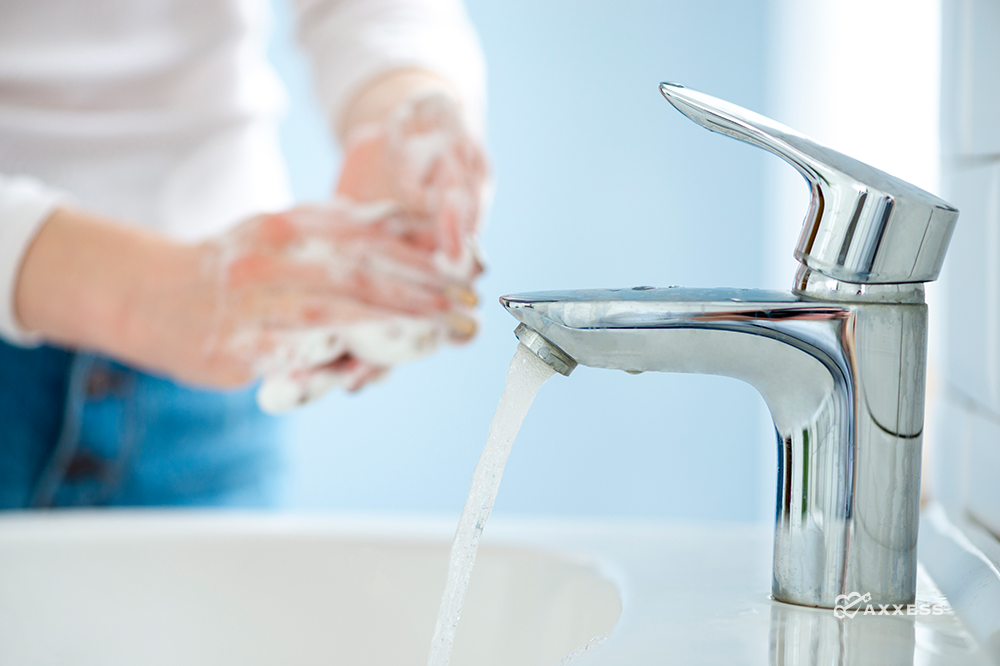
The coronavirus (COVID-19) has been found to be more dangerous for people with underlying health issues and anyone with a taxed or weakened immune system, which includes the elderly. Stopping the transmission from person to person is essential.
Methods of Viral Transmission
The virus is found in secretions from the respiratory tract and is spread through the same means as the flu. When an infected person coughs or sneezes, droplets filled with the virus can land in a mucous membrane area of another person. Mucous membranes that remain uncovered, including the eyes, nose, and mouth, are easy targets for the virus to settle.
The amount of time that droplets produced from a sneeze or cough can remain in the air has not been agreed on, but it is considered infectious. The smaller the droplet, the longer it stays in the air. This mode of transmission is not new and is similar to the common flu and prior viruses.
The coronavirus can also remain viable on surfaces for several hours depending on the material. Touching a surface then touching your eyes, nose or mouth introduces the still-living virus to the welcoming mucous membranes where the virus takes control of a cell and reproduces quickly.
The Centers for Disease Control and Prevention gives guidance for low- and no-risk populations:
- Social distancing involves putting physical distance between you and people who could unknowingly be infected with COVID-19. Work from home when possible and avoid social gatherings or conferences. Use technology to conduct meetings and connect with family members using your phone or computer. Do not travel by air.
- When outside, maintain a six-foot radius from others.
- Hand hygiene should be performed stringently. Wash your hands with soap and water with lather and friction for 20 seconds, including between your fingers and around and under fingernails to remove contaminants. Remember to remove and wash jewelry as well. If soap and water are not available and hands are not visibly soiled, use an alcohol-based hand sanitizer with at least 60% alcohol. Thoroughly wet hands with alcohol gel and allow them to air dry, killing viruses and bacteria.
- Clean surfaces that are touched by multiple people or visibly soiled with soap and water then dry and disinfect with approved commercial disinfectants or non-diluted hydrogen peroxide. These cleansers must stay on the surface for ten minutes or until completely dry. The surface must be visibly wet. A minimum of 70% alcohol must be in contact with the virus for at least 20 seconds to be effective. Don’t forget to disinfect your phone, computer, remote controls, and game controllers as well.
While these actions help protect your family from the virus, don’t forget to take care of your family in other ways.
Care at home provider considerations to prevent becoming infected:
- Postpone home visits if possible by using home healthcare technology for ongoing status checks.
- Have disposable assessment tools available and left in patients’ rooms for patient use only.
- Use standard precautions, including appropriate Personal Protection Equipment (PPE). Apply respirator or mask, gown, gloves and eye protection prior to entering patient rooms that are confirmed or under investigation. Remove PPE just before exiting a patient’s room by folding exposed side inward and disposing of in a receptacle that does not need to be touched and can be removed safely. Perform hand hygiene after removing PPE. Eyeglasses are not adequate eye protection and a face mask should be used, especially for aerosolizing procedures. PPE is not reusable.
- Instruct the patient and caregivers on proper infection control and isolation suggestions.
- Teach symptom management per MD orders.
- Patients who receive aerosol-generating procedures, including nebulized medication, and are too sick to remain at home must be in an AIIR-Airborne Infection Isolation Room, therefore in the hospital.
Clinicians have been trained for these types of illnesses. We know how to keep ourselves and others safe from exposure through hand hygiene, social distancing and cleaning our environments. We are responsible for teaching patients and caregivers about the virus. COVID-19 is serious, but this is not uncharted territory. Rely on your training and share your knowledge.
Axxess is your partner in care in the home education and technology solutions. Find additional COVID-19 information on our resource page and our Help Center.
